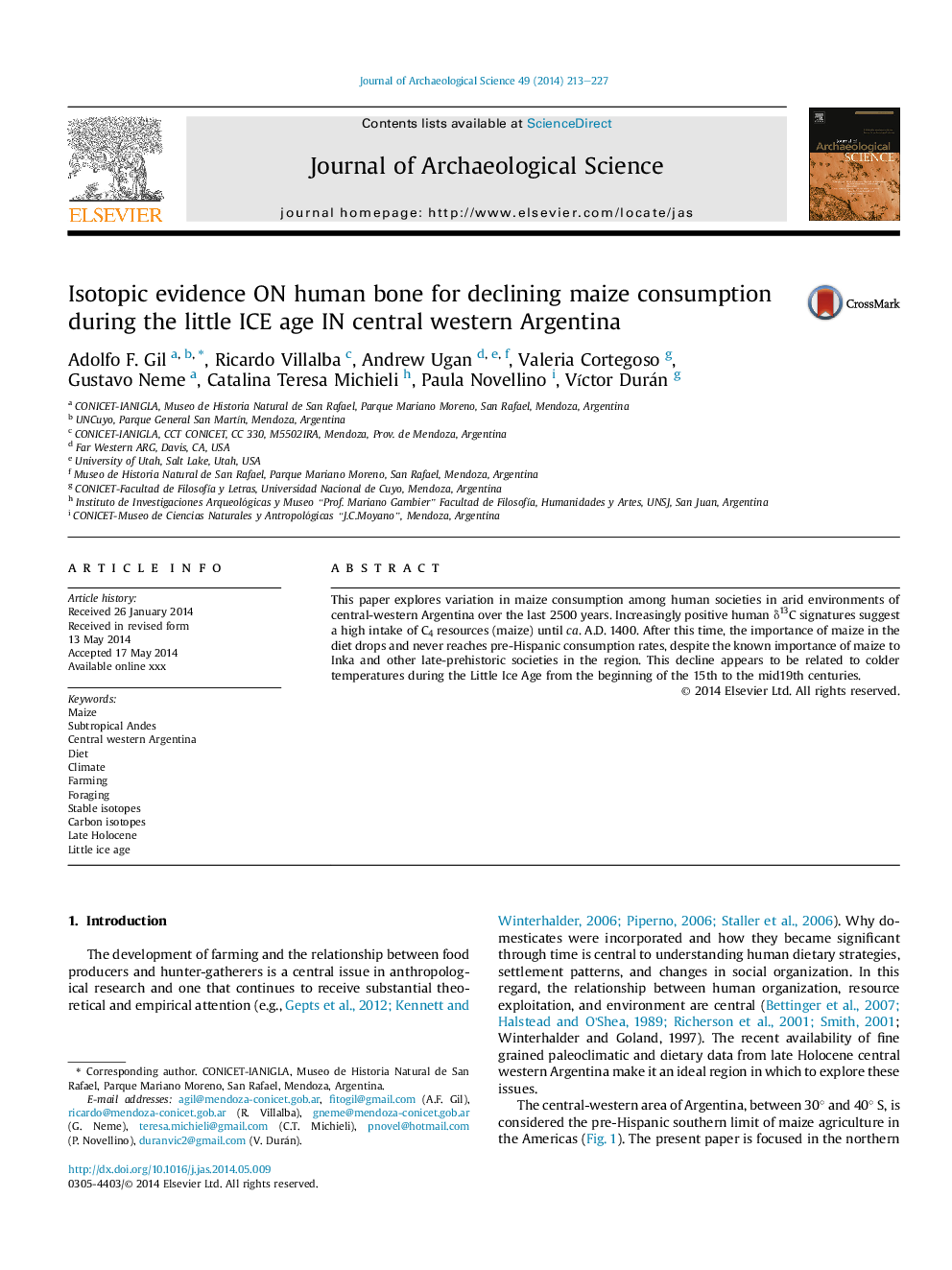| Article ID | Journal | Published Year | Pages | File Type |
|---|---|---|---|---|
| 7442987 | Journal of Archaeological Science | 2014 | 15 Pages |
Abstract
This paper explores variation in maize consumption among human societies in arid environments of central-western Argentina over the last 2500 years. Increasingly positive human δ13C signatures suggest a high intake of C4 resources (maize) until ca. A.D. 1400. After this time, the importance of maize in the diet drops and never reaches pre-Hispanic consumption rates, despite the known importance of maize to Inka and other late-prehistoric societies in the region. This decline appears to be related to colder temperatures during the Little Ice Age from the beginning of the 15th to the mid19th centuries.
Keywords
Related Topics
Physical Sciences and Engineering
Materials Science
Materials Science (General)
Authors
Adolfo F. Gil, Ricardo Villalba, Andrew Ugan, Valeria Cortegoso, Gustavo Neme, Catalina Teresa Michieli, Paula Novellino, VÃctor Durán,
